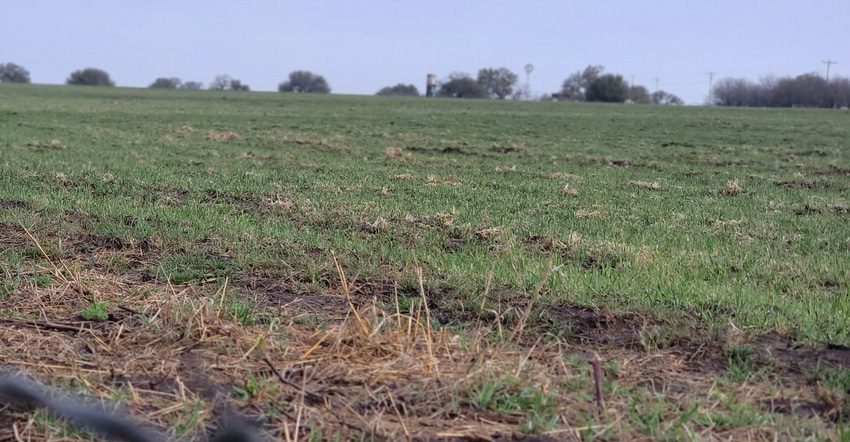
Is it too late to make investments in a wheat crop that is behind, drought plagued, and valuable?
Maybe not, says Oklahoma State University Extension Small Grains Specialist Amanda De Oliveira Silva.
“It depends on conditions from here on,” De Oliveira Silva says. “Moisture and nutrient requirements increase as wheat goes into the jointing stage. If producers get some moisture and see signs of nitrogen deficiency, research shows they can get a good return on investment now, even at the jointing stage. We’re seeing response to nitrogen in our trials.”
See, Wheat growers: don’t pass on profit potential
De Oliveira Silva says Oklahoma wheat got off to a slow start. “Wheat is still suffering from drought. We need a rain but considering all the conditions that have limited this crop, it’s still hanging in there in some areas.”
She says rain over a few areas of the state last week improved conditions. “Some areas missed the rain, and the Panhandle and Southwest Oklahoma are really dry. So, we still need more rain.”
She says some wheat took a long time to emerge, so the crop is short. “Some wheat emerged late, didn’t have time to tiller and in some cases we are not sure of adequate vernalization.”
Farmers have already abandoned acres. “Some decided not to take it forward; others are still trying to make something out of it. Overall, the crop is behind in growth because of the drought. It is just getting into jointing.”
See, WHEAT SCOOPS: India, Australian wheat may offset Black Sea exports
Management late
De Oliveira Silva says she’s hearing some reports of brown wheat mites, and farmers are determining whether to treat or let it go. “The first we heard of brown mites was in early March, before some areas had rain.”
At that time, with the crop late and still in drought, some farmers did not want to manage for the mites and add more money to a struggling crop. “When they got moisture, some decided to spray, but finding the chemical was also an issue.”
De Oliveira Silva also reports some greenbug activity. “We have not seen fungal diseases yet since it’s been so dry. Brown wheat mites, however, like dry weather.”
She adds that leaf rust likes warmer and drier weather as compared to stripe rust. “I’ve heard some reports of tanspot, but not much. Overall, it has been quiet for fungal diseases, but we need to keep an eye out for it.”
Late season management, she says, will depend on moisture.
See, Drought limits Southwest wheat opportunities
The March 27 National Agricultural Statistic Service (NASS) report for Oklahoma rated 28% of the wheat crop Very Poor, 25 % Poor, 29% Fair, 17% Good, and only 1% excellent.
“It’s critical, but considering all the adverse conditions, I think we are hanging in there. Wheat is a very resilient crop. In some areas, if they get timely rain, they have potential. But it all depends on timely rain.”
She says the price of inputs will be a factor, even with high wheat prices.
“We hope producers planted disease resistant varieties. If not, production costs could increase if fungal diseases show up.” She adds that adding nitrogen, even at current high prices, could show a return if deficiency is noted.
“We are behind in growth, but we still have time. Continue to watch out for insects and diseases,” she says.
About the Author(s)
You May Also Like






